The first exhibition curated by the new director Caterina Riva was inaugurated at MACTE in Termoli. Le 3 ecologie brings together eleven Italian and international artists who express themselves through different media: films, video, sculptures, installations, paintings. Citing the title of a famous and futuristic essay by Félix Guattari from 1989, the aim of the exhibition is clear: it’s important to treat the ecological issue from differents points of view. From Molise you are immediately projected into the world. Eleven artists show how the problem of climate change and the great environmental challenges connect different geographic regions and antipodal locations.
It is an exhibition that, rather than focusing on differences, brings down barriers. Climate changes, natural disasters predict a common destiny that embraces the whole world. At the same time, the exhibition and the selection of artists are intertwined with the life and biography of the curator, with her travels and international experiences. The marine landscape is often the link among many artworks, with an important reference to the sea to pay homage to the small town on the Adriatic. It is a journey from the Mediterranean Sea to the entire globe. Covid has actually altered perceptions of the center and periphery, so connecting a small, little-known region to the rest of the planet takes on even more significance.
The MACTE Foundation was born in 2019 in Molise from an interesting collaboration between the Municipality of Termoli and a private partner in a not well known region. Since the establishment of the Termoli Prize in 1955, many important personalities such as Palma Bucarelli, Giulio Carlo Argan, Filiberto Menna, Carla Accardi, Mario Schifano pass through the small town thanks to the important role played by Achille Pace. A collection of 500 pieces hosted today to the museum is the result. Some works of the collection interact with the show.
The embryonic work from which the idea for the exhibition develops, as Caterina Riva explains, is the animation by New Zealand artist Len Lye from 1929, never exhibited in Italy. Tusalava tells the beginning of life, single-celled organisms that are transformed into more complex creations, according to a vision far from anthropocentrism and which pays attention to the hidden world of bacteria, viruses, microorganisms. At the center of a large rotunda appears Ipogea, a polyurethane sculpture by Piero Gilardi, conceived as the activation center of the exhibition as the work should create an interaction with the viewer. It proposes a cave where a subterranean river flows, a source of bioenergy, a hidden treasure, a possible response to the environmental crisis.
The reference to water is also found in Francesco Simeti’s slide carousels, images of water courses taken by the “New York Times” flow in synchrony. And again water appears in the film by the Australian collective Karrabing Film Collective which tells the story of a boat accident. In Jonatah Manno’s works the reference to the seascape is still present. In his resin sculptures he uses what the sea gives back; the beach becomes a place of gathering and inspiration. The sculptures encapsulate seascapes in which it is easy to recognize litter. The cyanotypes on the walls instead represent the inscrutable movements of the water, suggested by the algae which are then removed from the surface of the paper leaving only the sense of movement.
Dialogues and overlapping views, in order to represent the interconnection that has been created in global society, take shape in the overlapping displays between Francesco Simeti and Nicola Toffolini, cancelling all kinds of hierarchies. The wallpapers by Francesco Simeti serve as wallpaper for Toffolini’s drawings, executed with maniacal accuracy to represent a future not far from us, an island from which protruding roots emerge like tentacles to give life to a post-catastrophe landscape without human beings. Simeti’s wallpapers are born from his archival spirit, the artist appropriates plant motifs taken from art history books; details left in the background of the artworks in an ornamental guise occupy the space, mixing with species belonging to different geographical contexts. Silvia Mariotti also invades the room with a large wallpaper creating a dialogue with the photos on display entitled Boutade. The feeling is to enter a tropical forest, combining fantasy and reality. And furthermore Matilde Cassani, Jumana Manna, Francis Offman, Micha Zweifel.
Info:
AA.VV., Le 3 ecologie
05.02.2022 – 15.05.2022
MACTE
Museo di arte contemporanea di Termoli
via Giappone snc, Termoli CB
+39 0875 80 80 25
info@fondazionemacte.com
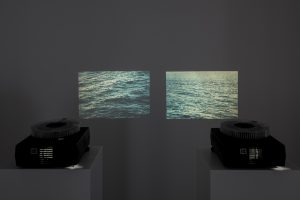 Francesco Simeti, Corpi, 2021, installation view Le 3 ecologie, MACTE, 2022. Ph by Gianluca Di Ioia, courtesy MACTE
Francesco Simeti, Corpi, 2021, installation view Le 3 ecologie, MACTE, 2022. Ph by Gianluca Di Ioia, courtesy MACTE
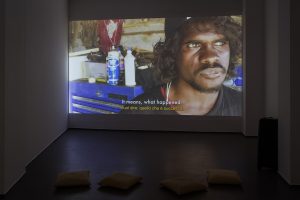 Karrabing Film Collective, Wutharr: Saltwater Dreams, 2016, video installation Le 3 ecologie, MACTE, 2022. Ph by Gianluca Di Ioia, courtesy MACTE
Karrabing Film Collective, Wutharr: Saltwater Dreams, 2016, video installation Le 3 ecologie, MACTE, 2022. Ph by Gianluca Di Ioia, courtesy MACTE
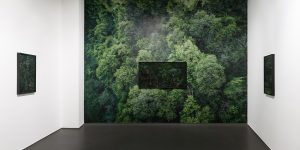 Silvia Mariotti, Boutade #4, 2021. Installation view, Le 3 ecologie, MACTE, 2022. Ph by Gianluca Di Ioia, courtesy MACTE
Silvia Mariotti, Boutade #4, 2021. Installation view, Le 3 ecologie, MACTE, 2022. Ph by Gianluca Di Ioia, courtesy MACTE
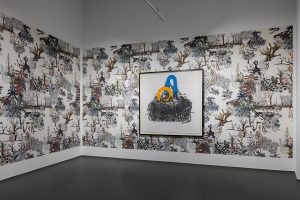 Francesco Simeti, Hawkweed, 2016 (wallpaper). Nicola Toffolini, Pòst #02, 2020 (drawing), installation view Le 3 ecologie, MACTE, 2022. Ph by Gianluca Di Ioia, courtesy MACTE
Francesco Simeti, Hawkweed, 2016 (wallpaper). Nicola Toffolini, Pòst #02, 2020 (drawing), installation view Le 3 ecologie, MACTE, 2022. Ph by Gianluca Di Ioia, courtesy MACTE
Antonella Palladino, after graduating in Conservation of Cultural Heritage, continued her education at Fondazione Morra and Pan. She currently lives in Pavia and she is a professor of art history.



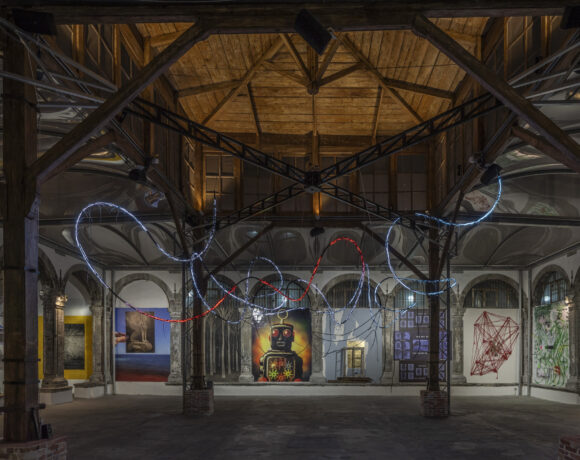
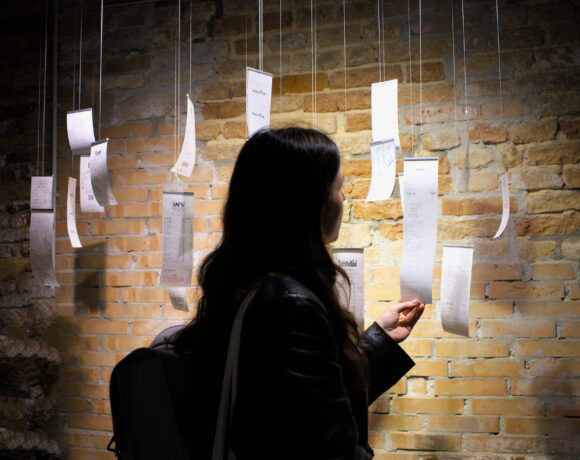

NO COMMENT